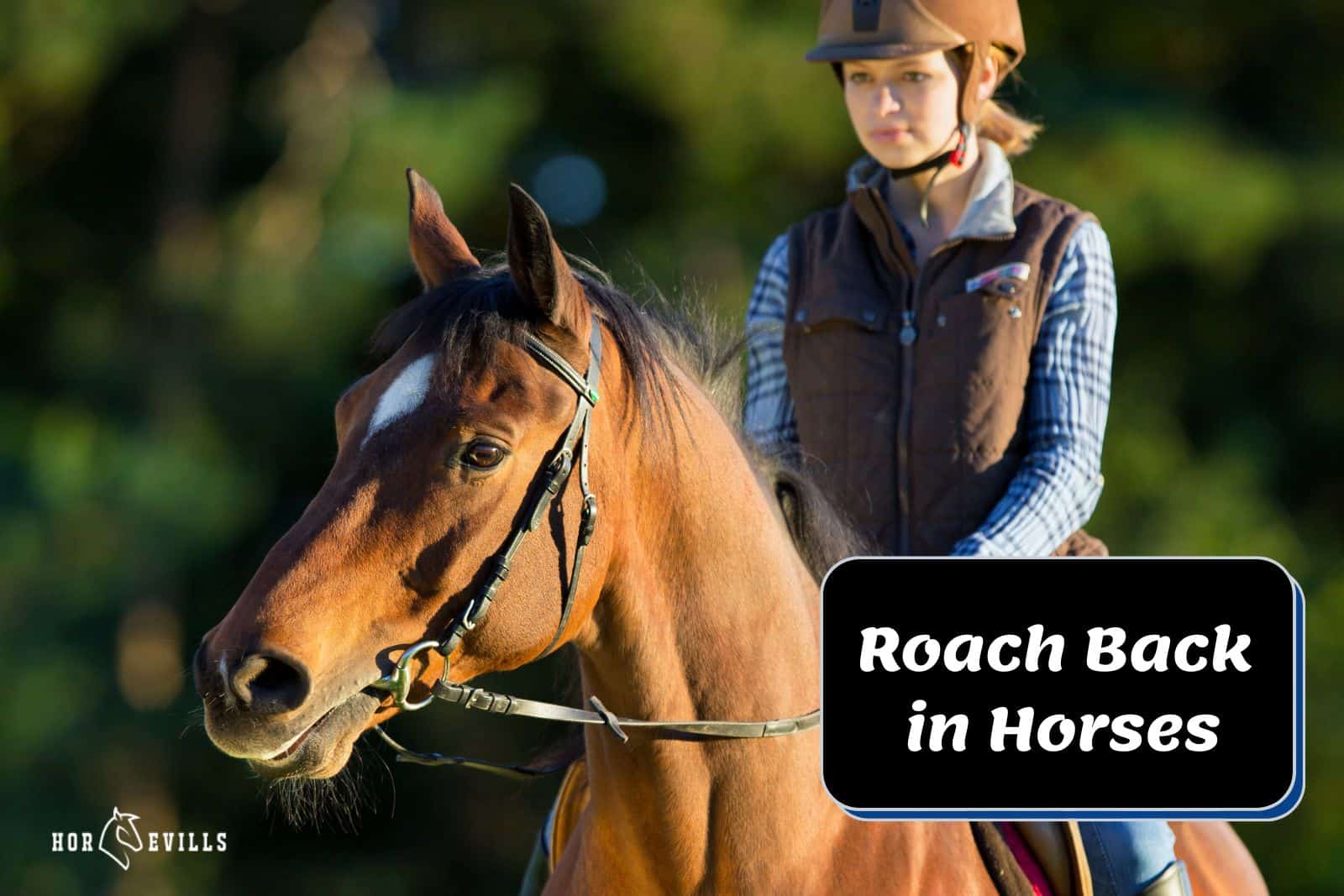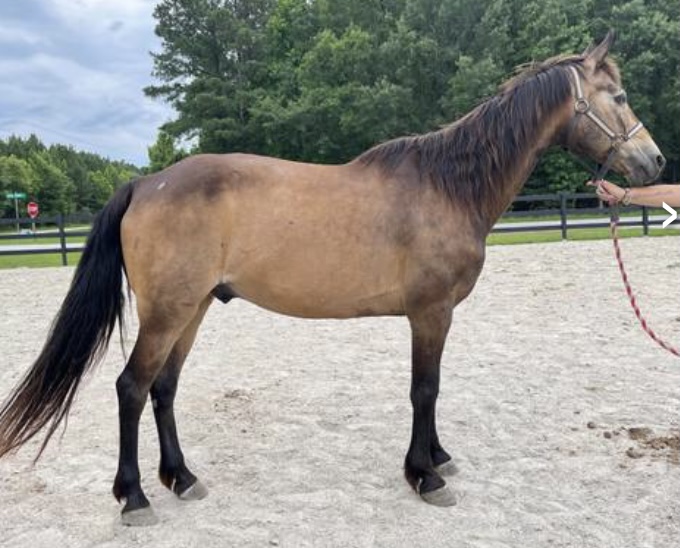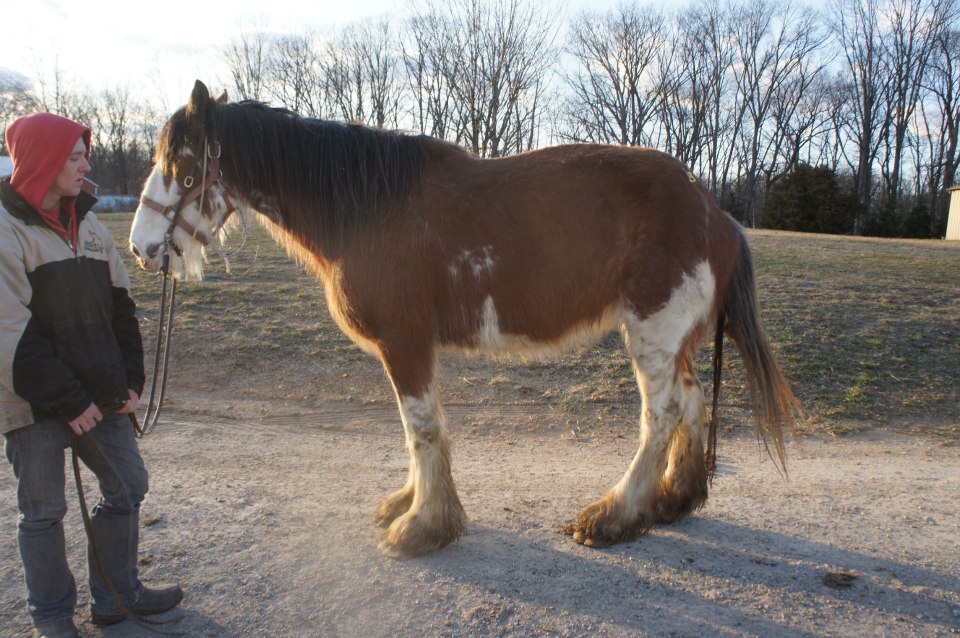Roach back? The Horse Forum
Roach-backed horses tend to be less common than those with swaybacks. Young horses who grow fast may experience kyphosis or roche back. The onset usually occurs between six and nine months after horses are weaned. The dorsal processes in the lumbar vertebrae have a unique height, which gives the animal its characteristic hump-backed appearance.
another roach back question The Horse Forum
The pros of a roached mane are less maintenance and no mane interference while calf roping or playing polo. A roached mane grows back healthier and can improve a horse's aesthetics. The cons of a roached mane are less protection against pests and elements and nothing to grab onto when riding. Certain horse breeds typically presented with a.

Horse with roached shaven) mane & forelock. Usually done if
Roach back is characterized by a rounding of the horse's back at the withers, which can cause the horse to appear hunched over. In severe cases, the horse may even have a sway back. This condition can be extremely painful for the horse, and can make it very difficult for them to move around.

Roach Back in Horses Causes, Treatment & More Facts
Horse roach back or kyphosis is a structural abnormality in horses caused by excessive upward backbone bending. The lumbar spine is the most affected area, followed by the thoracic spine. Roach back in horses can be congenital or secondary due to repetitive functional abuse.

Horse Roach Back (Is My HORSE Healthy?) APB
Roach back, known also as kyphosis, occurs occasionally in young horses that grow rapidly. Typically, onset happens after weaning at six to nine months of age. The dorsal processes of the lumbar vertebrae are unusually tall, giving the animal a characteristic hump-backed appearance.
.jpg)
The Ethics of Equine Rescue The Roach Backed Clyde A Win for the
Diagnosing Neck and Back Problems in Horses - The Horse Diagnosing Neck and Back Problems in Horses May 11, 2022 Posted by Lucile Vigouroux Leg lameness should always be ruled out first.

Managing Roach Back in Horses
At slower gaits, the horse's back muscles relax and become supple, giving him more freedom to bend and stretch. Ideally, when a horse jogs in a circle, he "bends around a rider's leg.". That is, his neck curls slightly, while a less obvious curve immediately below the rider's leg originates in the thoracic spine.

Horse with roach back Collection
Dip or sway backed (abnormal sunken back) horses have a weakness, while those with roach backs (humped) typically lack suppleness. Common causes of back pain in horses.

Thoughts on roach back Hunter/Jumper Chronicle Forums
Horses have been carrying burdens on their backs since man discovered that he could cover more ground faster while riding a horse as opposed to striding along on his own two legs. Man also.

Roached Manes How & When to Roach a Horse's Mane
🔷 Kyphosis (Roach Backs) in Horses Roach backs are caused by excessive flexion of the lumbar spine and sometimes the thoracic spine. They can be congenital (genetic) or functional (caused by musculoskeletal dysfunction).

Roach Back in Horses Causes, Treatment & More Facts
Roach back, known also as kyphosis, occurs occasionally in young horses that grow rapidly. Typically, onset happens after weaning at six to nine months of age. The dorsal processes of the lumbar vertebrae are unusually tall, giving the animal a characteristic hump-backed appearance. What causes a sway back horse?

Roached Manes How & When to Roach a Horse's Mane
Jul 10, 2023 Most people are familiar with 'swayback' in horses, where the line of the back dips downwards in the middle like a hammock. The reverse condition, where the spine is very straight or bows upwards into a hump, is commonly referred to as "roach back" (a.k.a., hyperkyphosis). The underlying cause of roach back is a deformity of the spine.

How to Roach A Horses' Mane YouTube
Roach back in horses is a conformation issue with the spine that is easy to spot. It occurs when part of the spine curves upwards instead of evenly, creating a hump-backed appearance. Unlike.

My Standardbred (roached back or not?) The Horse Forum
#1 · Oct 15, 2011 Hello, all. My Vanna came home today and it seems her biggest fault is a very minor roach back. I haven't decided if her back is actually 'roachy', or if she's just really lacking a top-line. Here is a not so great photo of her, but it shows what I think is a slight roach back:

My Standardbred (roached back or not?) The Horse Forum
Roach back in horses is a condition where the spine appears curved upwards in the middle. This condition can be caused by congenital or functional factors. Congenital roach backs are usually genetic in nature and cannot be treated. However, functional roach backs can be treated with various methods.

The Ethics of Equine Rescue
What is Roach Back (Kyphosis) in Horses? Roach back in horses is easy to spot and is a conformation issue with the spine. It is when part of the spine curves upwards instead of evenly. It is basically the opposite of a sway back (Lordosis). Scarsdale Equine Vets define it as "a dorsal deviation of the spine. This is usually a